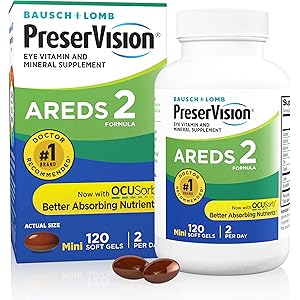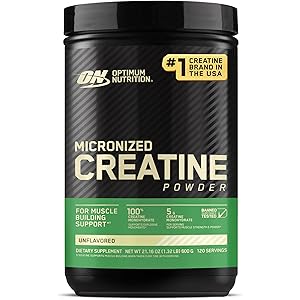PreserVision AREDS 2 Eye Vitamins, #1 Eye Doctor Recommended Brand, Lutein and Zeaxanthin Supplement with Vitamin C, Vitamin E, Zinc, and Copper, 120 Softgels (Minigels)
$33.89 (as of October 25, 2025 06:13 GMT +00:00 - More infoProduct prices and availability are accurate as of the date/time indicated and are subject to change. Any price and availability information displayed on [relevant Amazon Site(s), as applicable] at the time of purchase will apply to the purchase of this product.)What is a DASH Diet?
The DASH diet, which stands for Dietary Approaches to Stop Hypertension, is a dietary plan designed to help individuals lower their blood pressure and improve overall heart health. This eating pattern emphasizes the consumption of whole foods, particularly fruits, vegetables, whole grains, and lean proteins, while minimizing the intake of sodium, saturated fats, and added sugars. The DASH diet is not just a temporary fix; it promotes long-term lifestyle changes that can lead to sustainable health benefits.
Key Components of the DASH Diet
At the core of the DASH diet are its key components, which include a rich variety of nutrient-dense foods. The diet encourages the intake of at least 4-5 servings of fruits and 4-5 servings of vegetables each day. Whole grains are also a staple, with recommendations of 6-8 servings daily. Lean proteins, such as fish, poultry, beans, and nuts, are encouraged, while red meat and full-fat dairy products are limited. This balanced approach ensures that followers receive essential vitamins and minerals while maintaining a healthy weight.
Benefits of Following the DASH Diet
One of the primary benefits of the DASH diet is its ability to significantly lower blood pressure, making it an effective strategy for those with hypertension. Research has shown that individuals who adhere to this diet can experience a reduction in systolic and diastolic blood pressure levels. Additionally, the DASH diet has been linked to weight loss, improved cholesterol levels, and a decreased risk of heart disease and stroke. These health benefits make it a popular choice among nutritionists and healthcare providers.
How to Start the DASH Diet
Starting the DASH diet involves making gradual changes to your eating habits. Begin by assessing your current diet and identifying areas for improvement. Focus on incorporating more fruits and vegetables into your meals, and opt for whole grains instead of refined grains. It’s also important to read food labels to monitor sodium intake, aiming for no more than 2,300 mg per day, or ideally 1,500 mg for those with high blood pressure. Planning meals and snacks ahead of time can help you stay on track and make healthier choices.
Meal Planning on the DASH Diet
Effective meal planning is essential for success on the DASH diet. Create a weekly menu that includes a variety of foods from all the recommended food groups. For breakfast, consider oatmeal topped with fresh fruit or a smoothie made with spinach and berries. Lunch options might include a quinoa salad with mixed vegetables and grilled chicken, while dinner could feature baked salmon with steamed broccoli and brown rice. Snacks can consist of nuts, yogurt, or sliced vegetables with hummus, ensuring you have healthy options readily available.
Common Misconceptions About the DASH Diet
Despite its numerous benefits, there are some misconceptions about the DASH diet. One common myth is that it is overly restrictive and difficult to follow. In reality, the DASH diet is flexible and encourages a wide variety of foods, making it easier to adapt to personal preferences and cultural cuisines. Another misconception is that the diet is only for those with high blood pressure; however, anyone looking to improve their overall health can benefit from its principles.
Challenges of the DASH Diet
While the DASH diet offers many advantages, it can present challenges for some individuals. Adjusting to a lower sodium intake may take time, and cravings for salty or processed foods can be difficult to overcome. Additionally, busy lifestyles may make it challenging to prepare fresh meals regularly. However, with proper planning and preparation, these challenges can be managed effectively, allowing individuals to reap the benefits of the DASH diet.
Long-Term Sustainability of the DASH Diet
The DASH diet is designed for long-term adherence rather than quick fixes. Its emphasis on whole, unprocessed foods makes it a sustainable choice for maintaining a healthy lifestyle. Many individuals find that once they adapt to the DASH principles, they naturally gravitate towards healthier food choices. This diet not only supports weight management but also fosters a positive relationship with food, encouraging mindful eating habits that can last a lifetime.
Conclusion: The DASH Diet as a Lifestyle Choice
Ultimately, the DASH diet is more than just a dietary plan; it is a lifestyle choice that promotes overall health and well-being. By focusing on nutrient-rich foods and reducing sodium intake, individuals can improve their heart health and reduce the risk of chronic diseases. Whether you are looking to lower your blood pressure or simply adopt healthier eating habits, the DASH diet provides a comprehensive framework for achieving your health goals.


